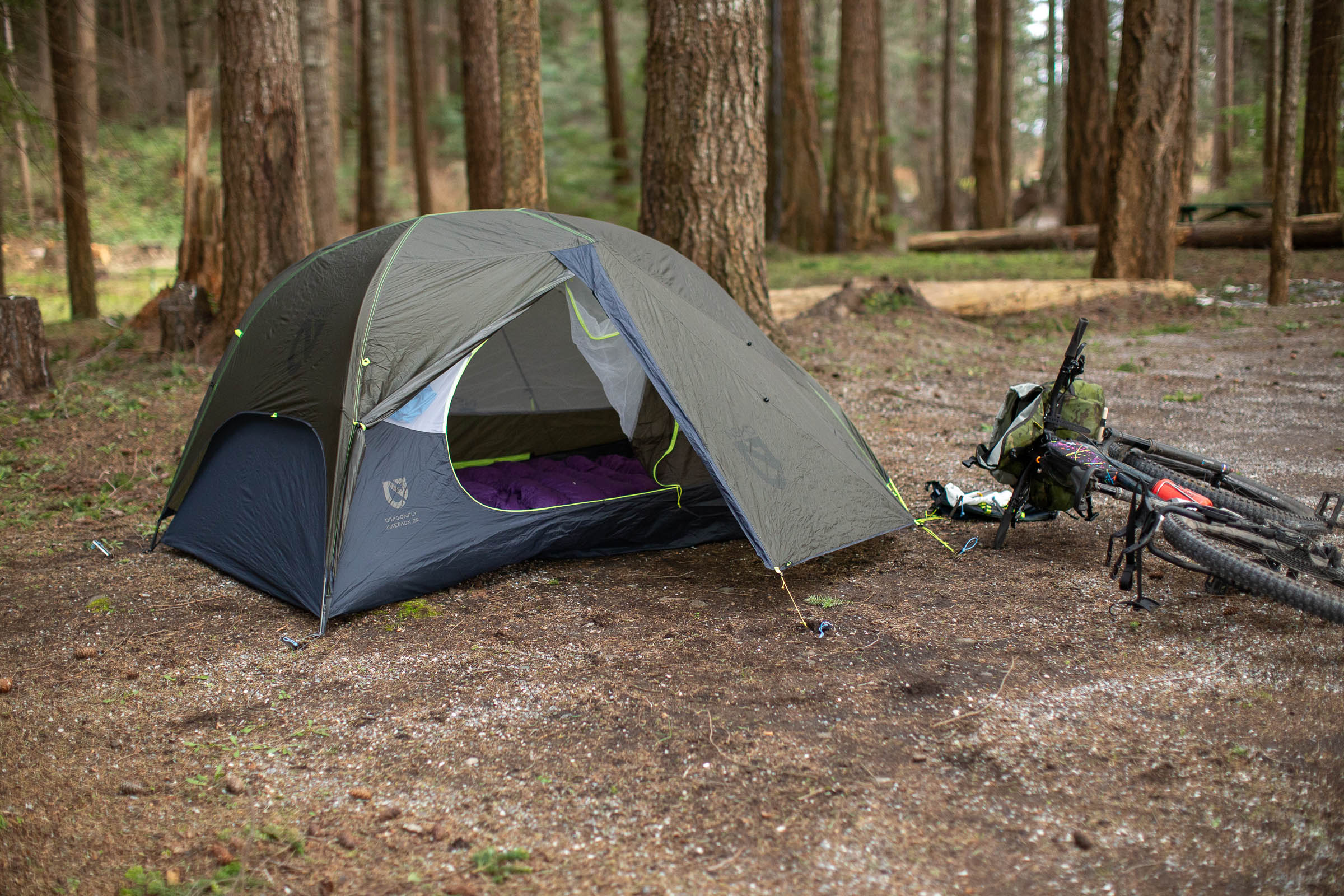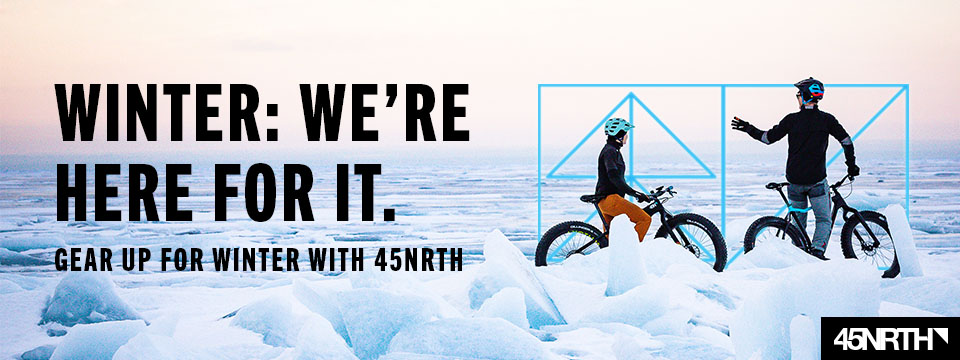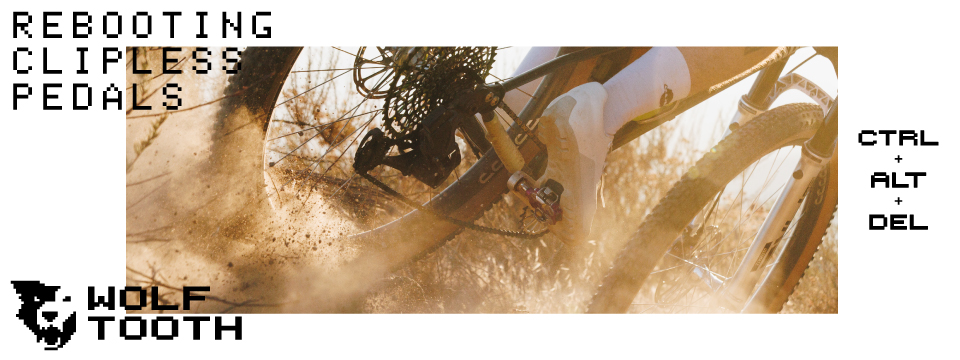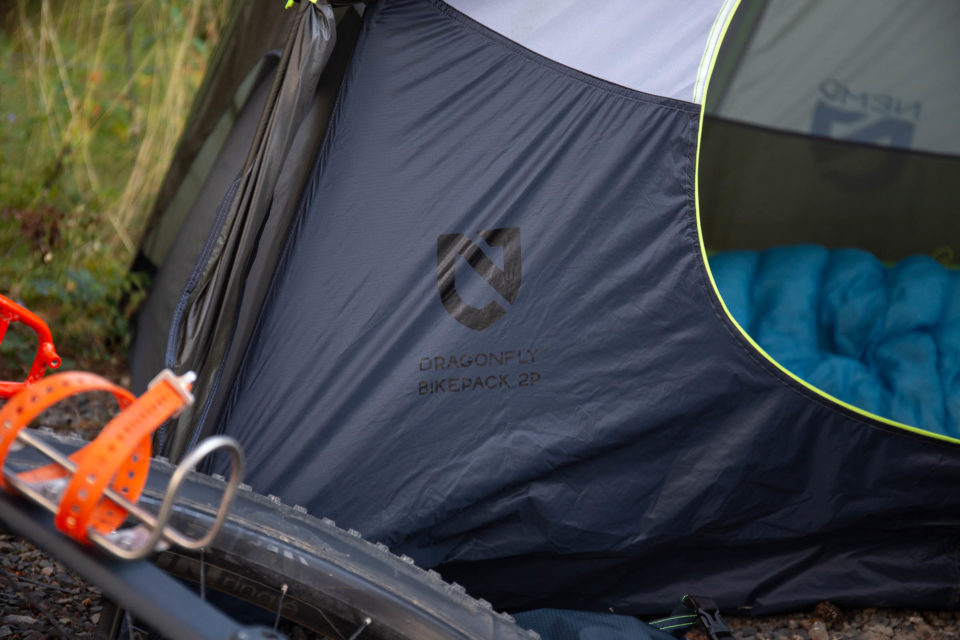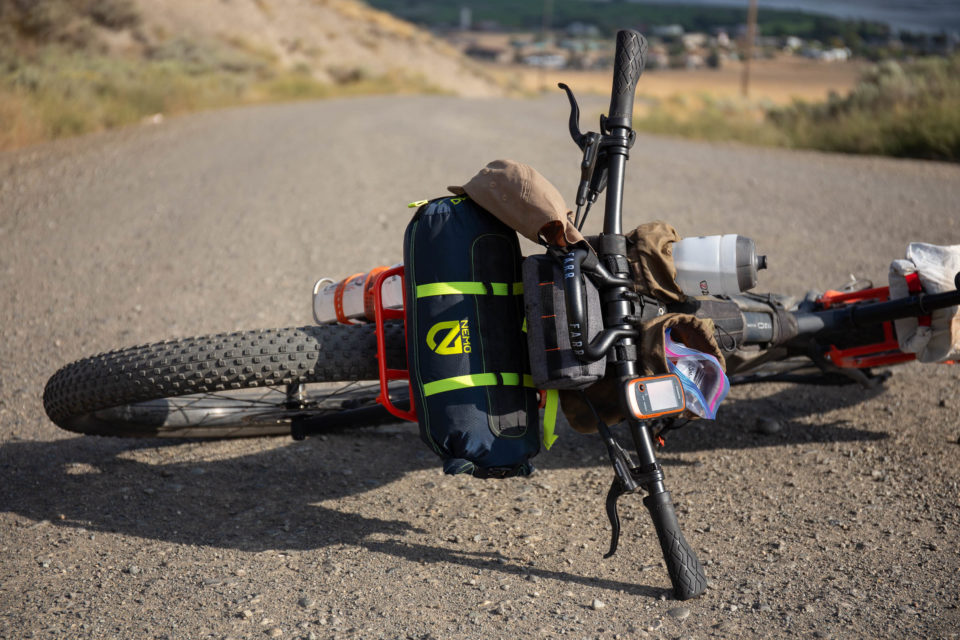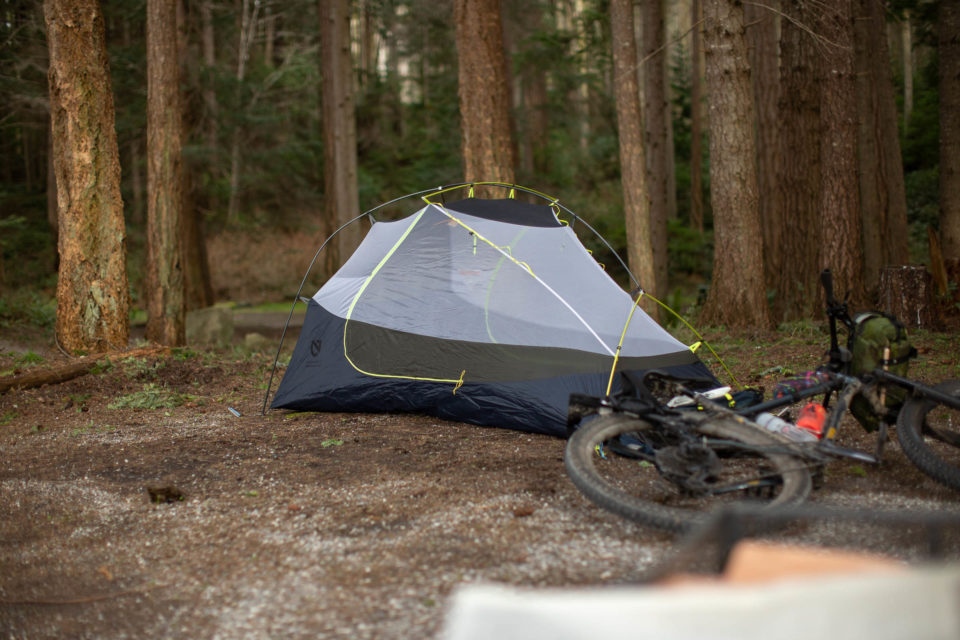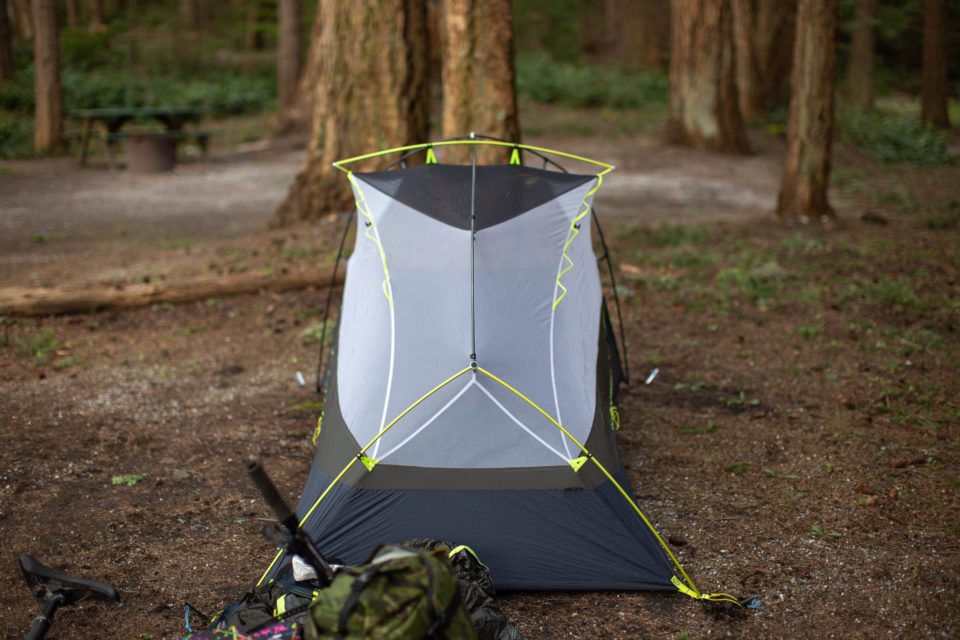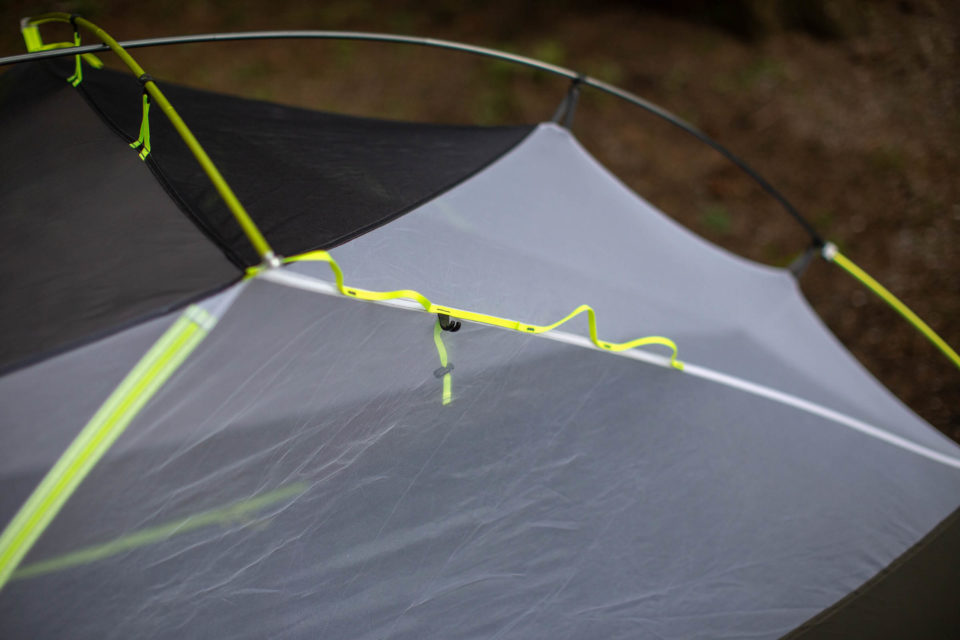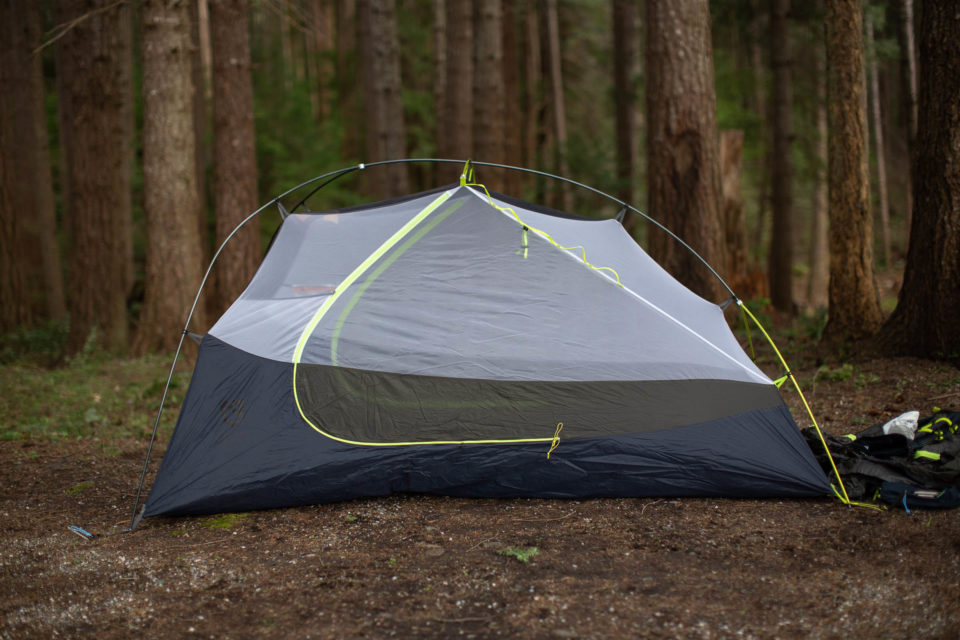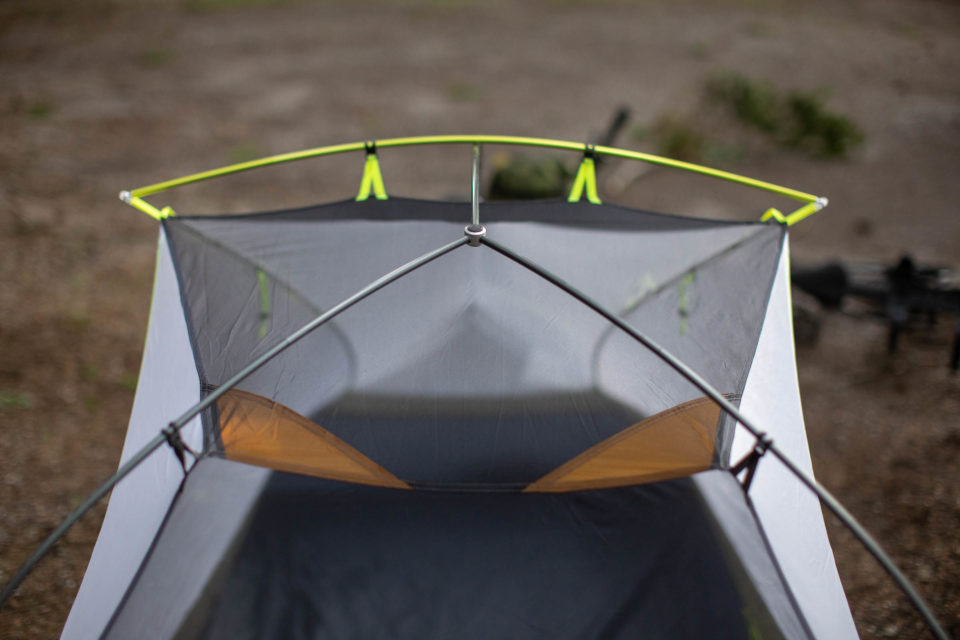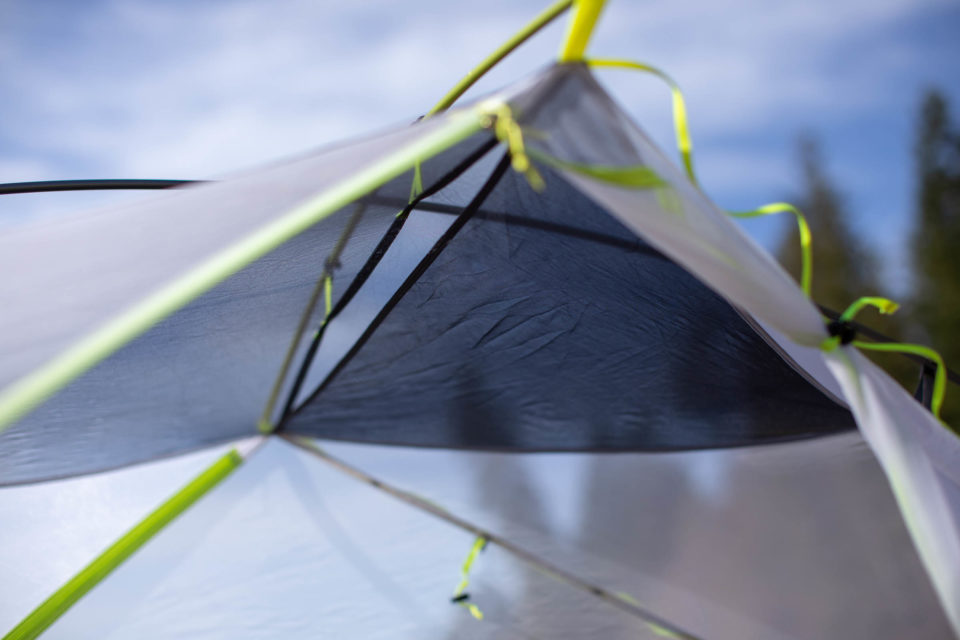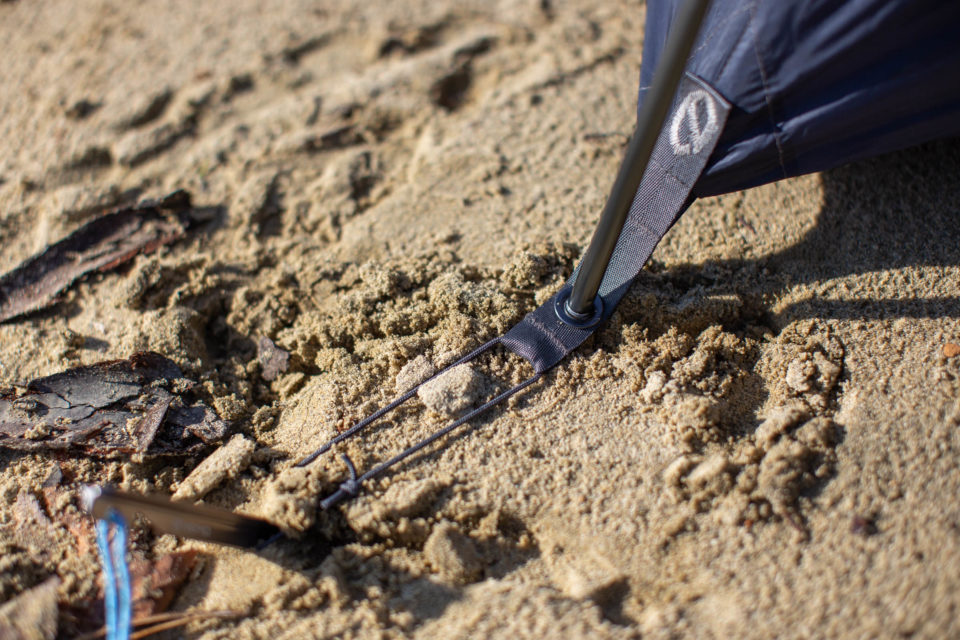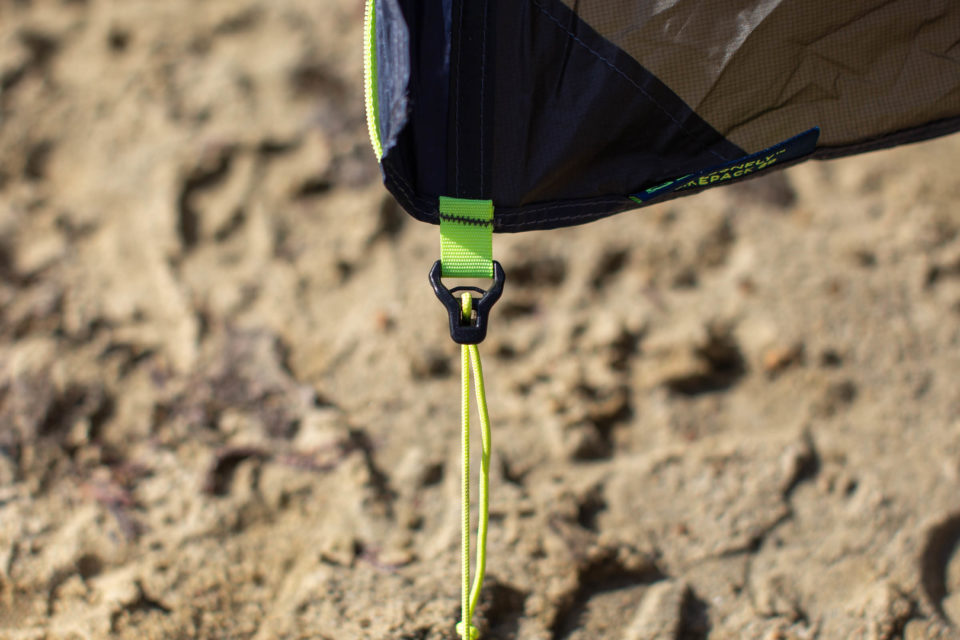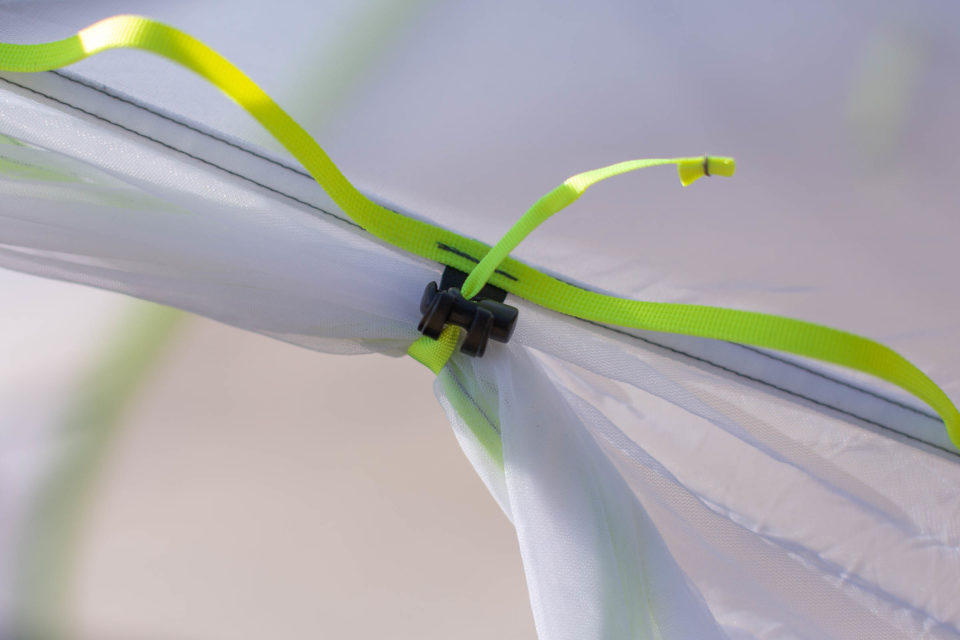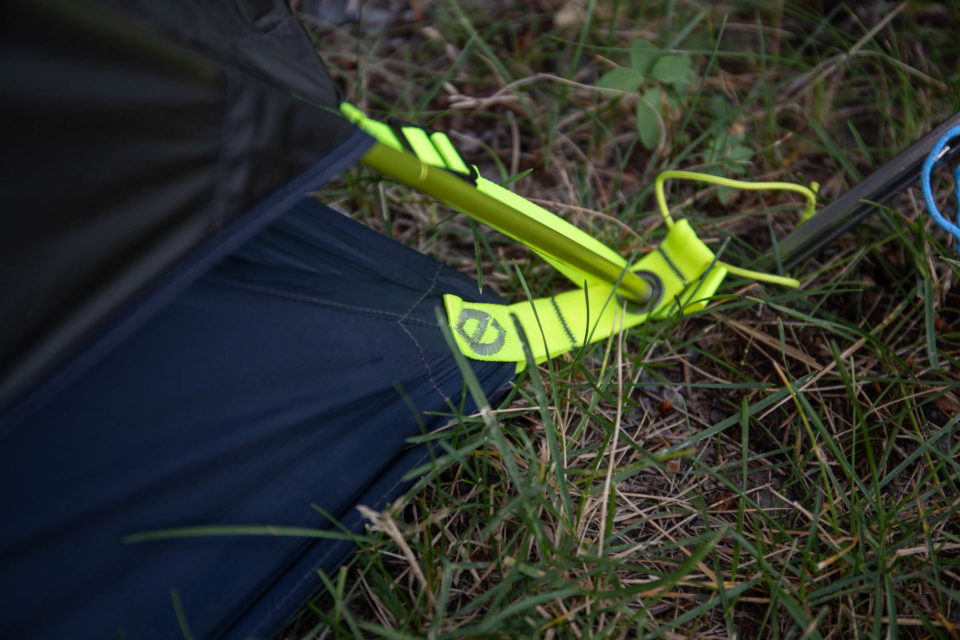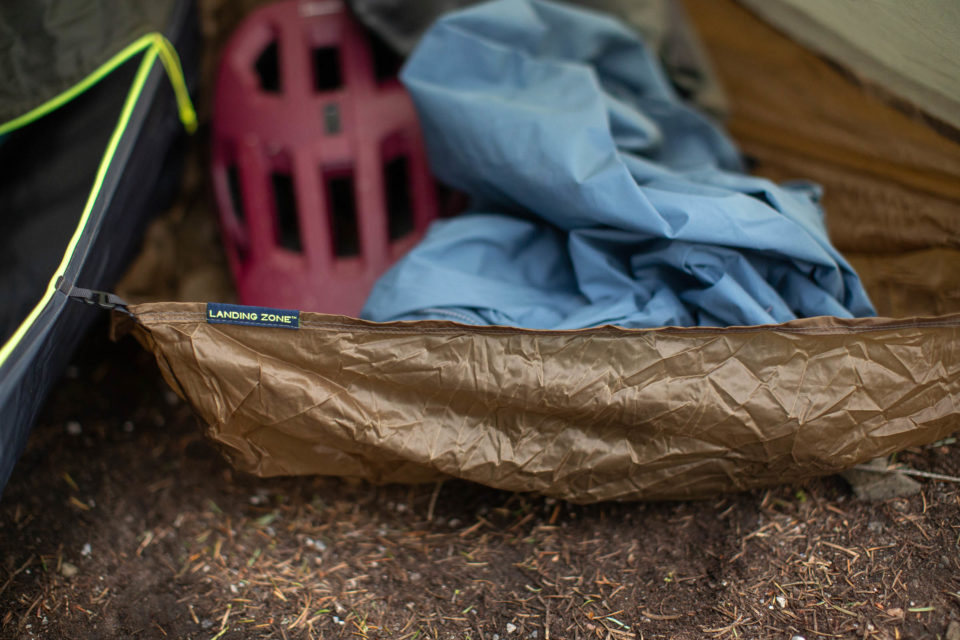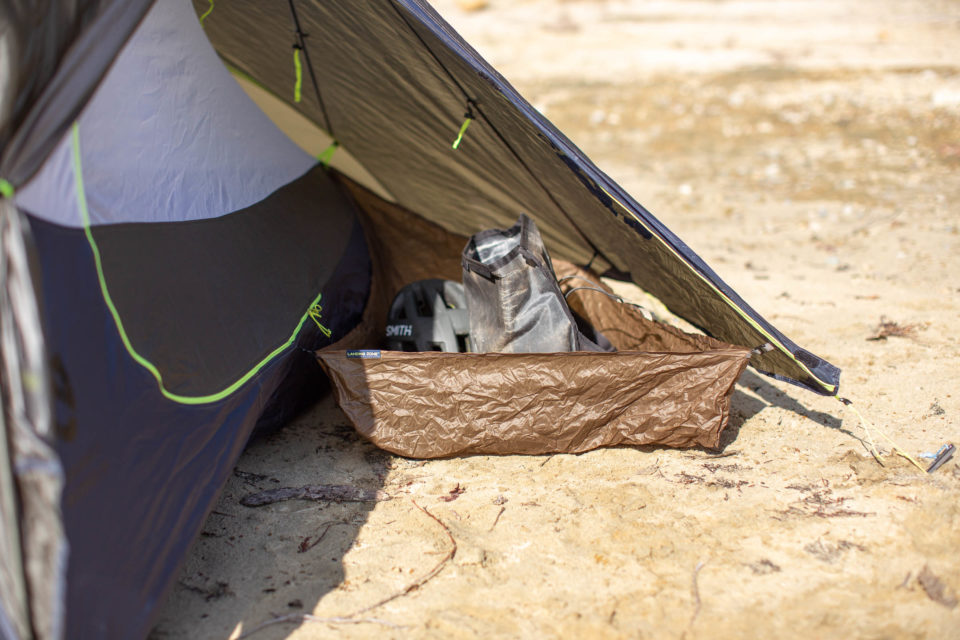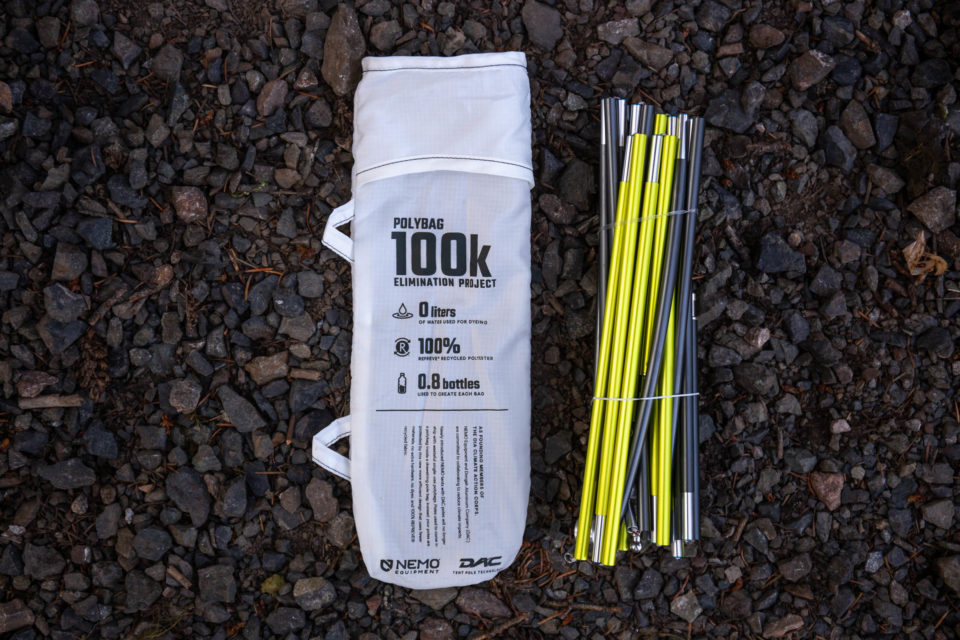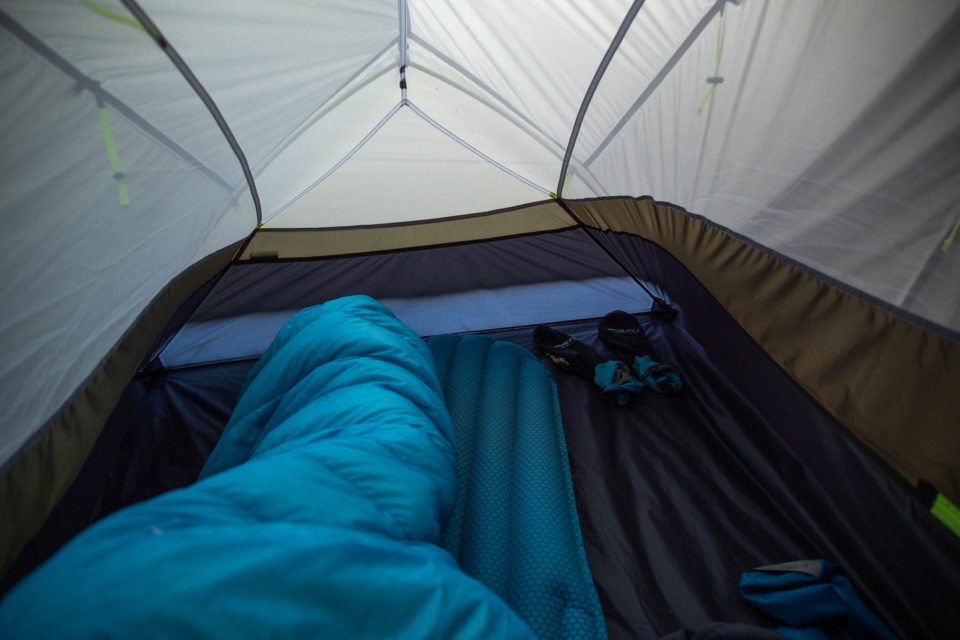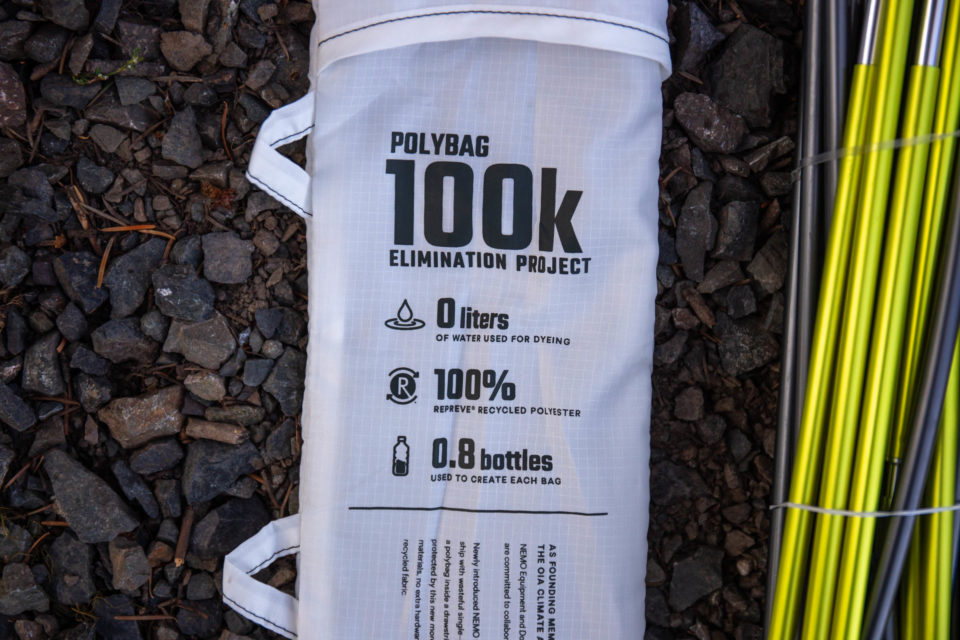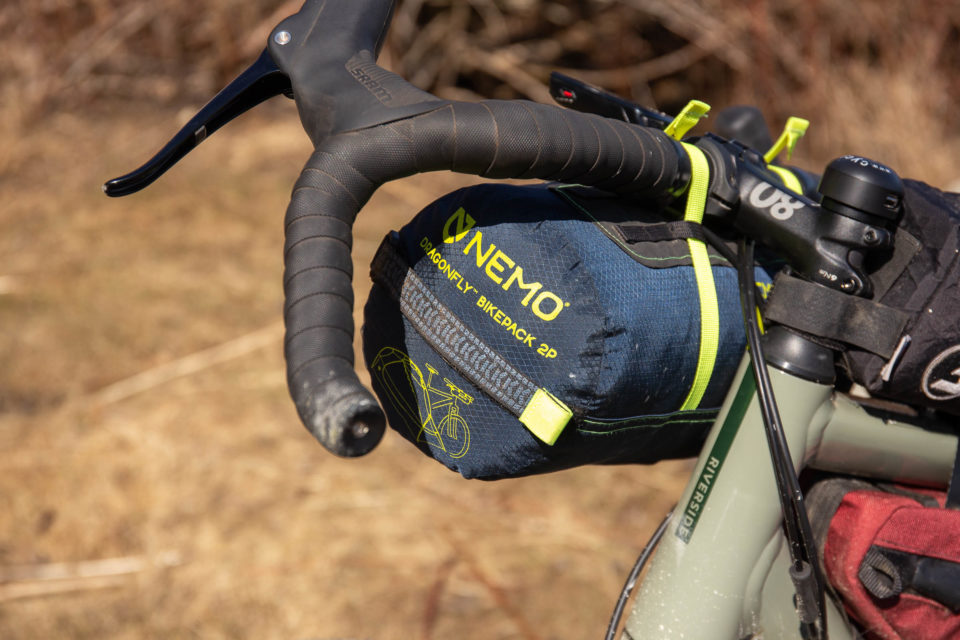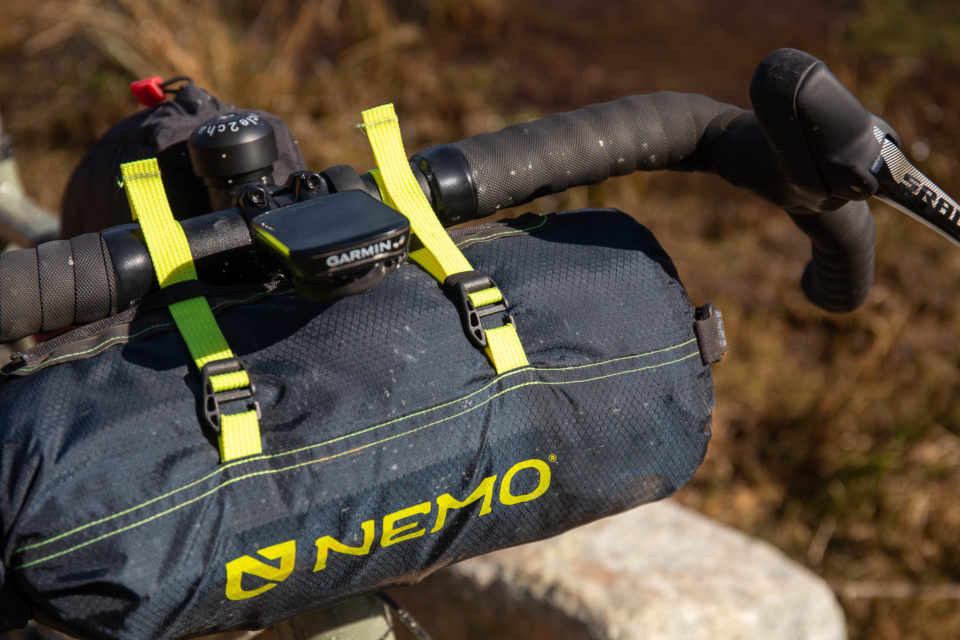Nemo Dragonfly Bikepack Tent Review
The new Nemo Dragonfly Bikepack Tent is loaded with bikepacking-specific features, including compact poles, a roll-top bag for handlebar mounting, a vestibule storage tub, and a subdued appearance. Read on for our review of the two-person model after several months of testing…
PUBLISHED Mar 23, 2021
The ongoing evolution of bikepacking-specific camping gear is an exciting thing. Although much of what we use is standard backpacking gear—such as tents, sleeping bags, and camp stoves—there’s no question that bikepackers can greatly benefit from even small design tweaks that make those things better suited to packing on a bike. Following the lead of Big Agnes, Nemo aims to address the unique needs of bikepackers with new bikepacking-specific tents that pack up smaller, offer improved gear organization, and can be strapped directly onto handlebars.
The latest bikepacking-specific range to catch our eye is Nemo’s Dragonfly Bikepack Tent lineup, which we got a sneak peek of last summer. Pulling some inspiration from Big Agnes’ Bikepack tent line, the Nemo Dragonfly Bikepack Tent features a durable stuff sack with handlebar straps, shortened poles for easier packing, and some extra gear organization features to keep your trailside home presentable. Nemo sent me the two-person model for a closer look, which I’ve been using on and off for a few months now, including my scouting mission on the Lac du Bois Tranquility route in Kamloops, British Columbia, and a few overnighters out here on the coast.
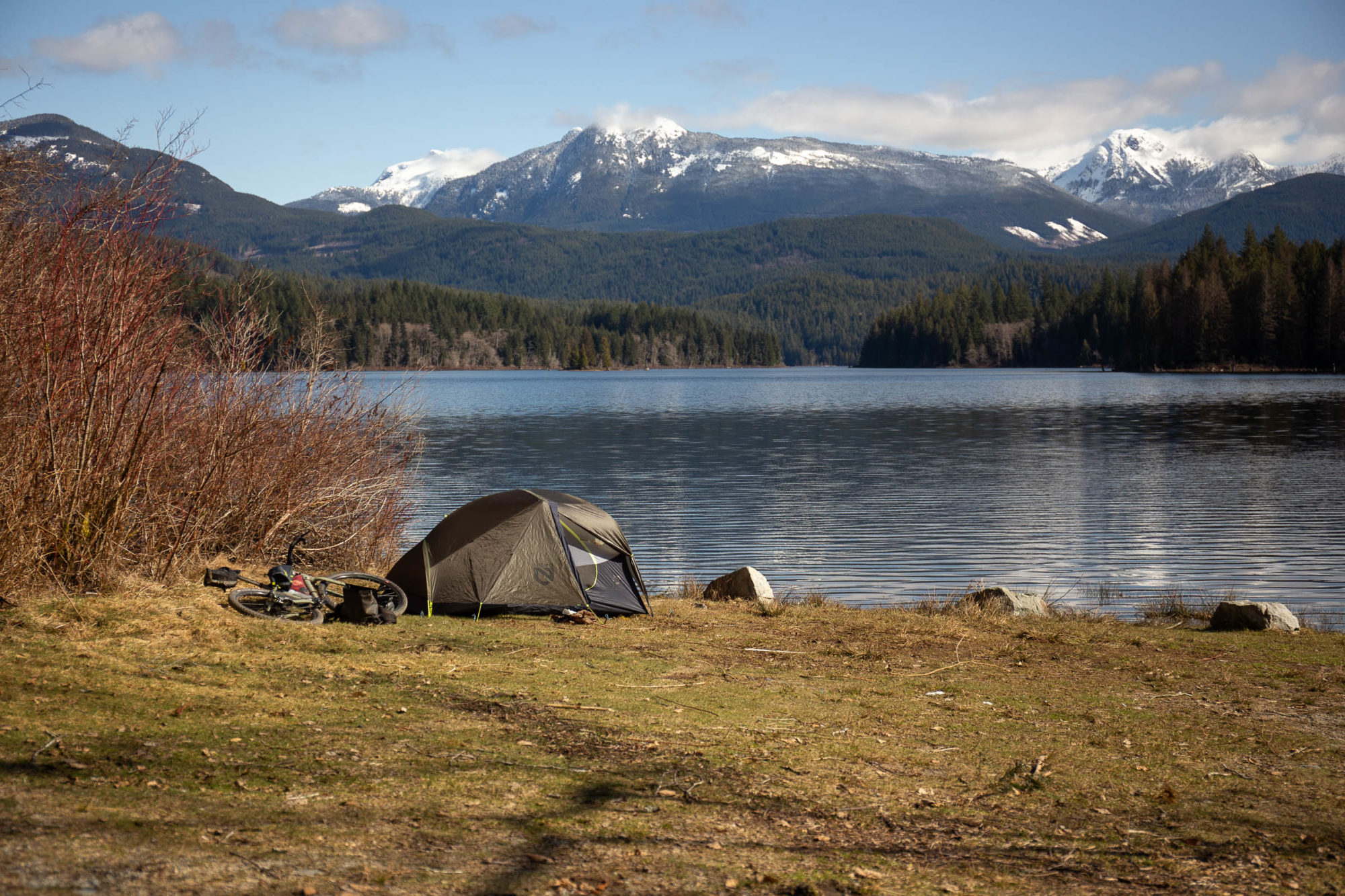
The standard Dragonfly tent line from Nemo is designed to offer the right balance of weight and liveability in a freestanding design. Features such as large doors, vestibules, easy set-up, and a reasonable total weight come standard, and all transfer over to the Dragonfly Bikepack line as well. They aren’t the absolute lightest tents out there, and instead focus on bikepacking-specific features and ease of use.
Dragonfly vs. Dragonfly Bikepack
Although the standard Dragonfly and Dragonfly Bikepack tents share a lot of the same specs, there are some notable differences. The pole segments are shorter, which allows for a narrower overall pack size (19.5” down to 14.5” on the two-person tent), which also ends up increasing the diameter by a couple of inches on the Bikepack tent. The interior dimensions are identical on both tents, with 29 square feet of floor space and either one or two 10-square-foot vestibules. The Dragonfly Bikepack Tent is a touch heavier than the standard version due to the addition of a few new features (Landing Zone storage tub, extra daisy chains), heavier-weight ripstop nylon on the canopy of the tent, and a more durable waterproof stuff sack that doubles as a handlebar bag. Find specs on both the 1-person and 2-person Dragonfly Bikepack tents below.
Nemo Dragonfly Bikepack 1-Person Specs
- Packed Weight: 1.34kg (2.9 pounds)
- Packed Size: 14.5 x 6”
- Floor Length x Width: 88 x 35-32”
Nemo Dragonfly Bikepack 2-Person Specs
- Packed Weight: 1.6kg (3.5 pounds)
- Packed Size: 14.5 x 6.5”
- Floor Length x Width: 88 x 50-45”
As you can see above, the two-person model is half a pound heavier, which is significant, but adds an additional door and vestibule, more floor space, and packs down to nearly the same size. Unless you strictly camp alone and are hoping to shave any extra weight, I think the two-person model I tested offers much more versatility. Like most two-person tents, there is also just enough room for two sleeping pads and I found it comfortable and roomy when sleeping solo without feeling like overkill. I could fit my long/wide Exped AirMat UL inside with plenty of room for extra clothing, as well as my hip pack, and still have a little extra space at my head and feet.
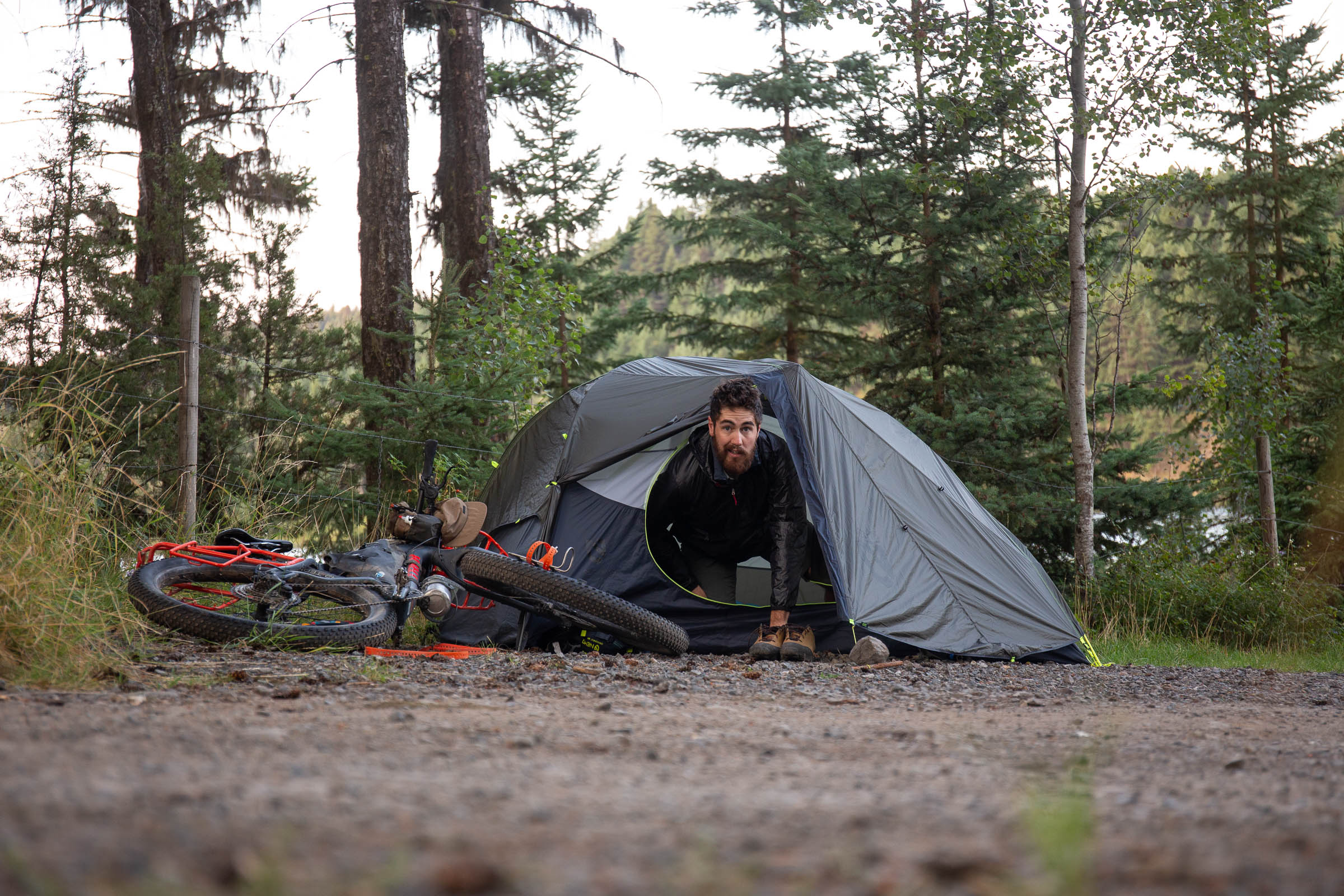
Design and Setup
The Dragonfly Bikepack Tent uses an X-shaped, freestanding pole design with an additional cross pole to increase head space inside the tent. I’ve been quite happy with the overall shape of the tent, which doesn’t taper aggressively downward or inward like some ultralight tents. Besides the height tapering down toward the foot end of the tent, the walls and head of the tent are nearly vertical, while the smaller Y-shaped pole at the bottom creates some room around your feet. With the fly installed, the walls taper far from the tent body, which helps deflect wind and makes for two generously sized vestibules. The fly is shortened at the head of the tent to save weight, which also happens to be the end that’s most susceptible to wind, a factor worth taking into consideration when setting up.
Something else I noticed was that only one end of the fly’s corners had adjustable webbing tabs, which added to how simple it was to set up. Nemo also includes pre-installed guy lines at each door, with a second beside them, and extra cordage in the bag for anyone looking for extra stability. Little features like this make for an extremely self-explanatory setup, which isn’t always the case with modern tents.
The DAC Featherlight NSL poles and corner tabs are colour coded to take any guesswork out of the orientation of the setup, as is the rainfly, which has grommets that snap into the poles. Speaking of the rainfly, it has a dark, subdued appearance with no major reflective elements, and it’s perhaps the most stealthy tent I’ve used. Coming from the Marmot Superalloy Tent, which might have the brightest colourway in existence, I’ve been a big fan of the darker green. Not only does it bring less attention to the tent, but I feel as if it has given me a fighting chance at sleeping in longer on some lazy mornings this winter. The fly is made from a 15D ripstop nylon with durable silicone and polyurethane coatings on opposite sides for what Nemo calls “the most reliable weather protection possible.” The body of the tent is made from the same 15D nylon alongside no-see-um mesh and the floor is made from a heavier 20D nylon for extra durability. Small rigid struts are integrated into the fly’s storm flap, which can be propped open to ensure adequate ventilation and neatly fold away when not in use.
Nemo includes 10 of their 7000-series aluminum tent stakes, which have so far proven to be quite durable and hold well in soft ground. There’s also a small patch and pole splint for basic field repairs. A footprint is not included, but Nemo offers them for an additional $39.95 – $49.965 USD.
Overall, I’ve been impressed with the tent’s durability. Although it weighs a little more than I’m used to, it packs down reasonably compactly and doesn’t feel nearly as delicate as some of the ultralight tents I’ve used in the past. The construction seems high quality and the freestanding design makes for a nice and simple pitch every time. It doesn’t require much fussing about getting the inimitable perfect pitch, making it a great choice for those newer to sleeping outside or anyone who appreciates a reliable setup. Folks looking to cut down on waste will be happy to know that the Dragonfly Bikepack tents (and all new Nemo tents, for that matter) will be shipped without a single-use poly pole bag, and instead come in a 100% recycled polyester bag that uses no extra hardware and dyes. Nemo and DAC are both founding members of the OIA Climate Action Corps where, alongside a large list of outdoor industry brands, they have committed to reduce greenhouse gas emissions and provide annual reports. Learn more at OutdoorIndustry.org.
Bikepacking-Specific
So, what makes the Dragonfly Bikepack so bikepacking friendly? Besides the shorter pole segments, which is a really nice feature, the tent stuff sack is actually a roll-top compression bag. To take things further, Nemo added two webbing straps for lashing onto your handlebar or rack, and an additional velcro handle on the end of the bag. The bag is reinforced with Hypalon near the straps, where it comes in contact with the bar, but is otherwise pretty straightforward. The storage bag has proven to be quite durable and its ripstop construction seems to be doing a good job. Although the seams aren’t sealed, they are double stitched and do a good job at keeping the tent itself dry in light rain. At the time of launch, Nemo assured me there was an additional strap to secure around the headtube of the bike, but what they are referring to is the strap/handle at the end of the bag, which could attach to your head tube or seat tube if the tent is strapped inside the main triangle. I didn’t try riding with the tent in this position because I’m sure my legs would hit it, and I can’t imagine it being a very stable option. Lashing it to your bars, with the addition of some Voile straps or attaching it directly to the top of a front or rear rack is the most realistic setup. On gravel roads, I found the integrated straps to be enough, but you’d want to supplement them with more straps when riding singletrack, as it has a tendency to bounce around.
New for the Dragonfly Bikepack is Nemo’s Landing Zone storage tub, which is simply a lightweight nylon tub that provides a place to put things in the vestibule. Although it might seem like a solution to a problem that doesn’t exist, I really enjoyed having a dry spot to put my helmet and hip pack when turning in for the night, especially since a lot of my testing occurred here in the Pacific Northwest where the ground is usually quite damp. It attaches to the body and fly in four locations using some tiny colour-coded clips and webbing loops. Unfortunately, I found it awkward to install, usually requiring me to crawl on my hands and knees to reach the furthest attachment points at the far corner of the vestibule. I expect most people will leave the Landing Zone at home, except during multi-day trips.
Nemo included several ways to organize your gear inside the tent, including some daisy chain webbing above the door to drying gear, several large interior pockets, and two light-diffusing sleeves for headlamps, which transform your handlamp’s harsh LED light into a warm yellow glow. The dark fly colour, as mentioned above, is also specific to the Dragonfly Bikepack, and is a great feature for anyone not looking to bring any extra attention to their camp setup.
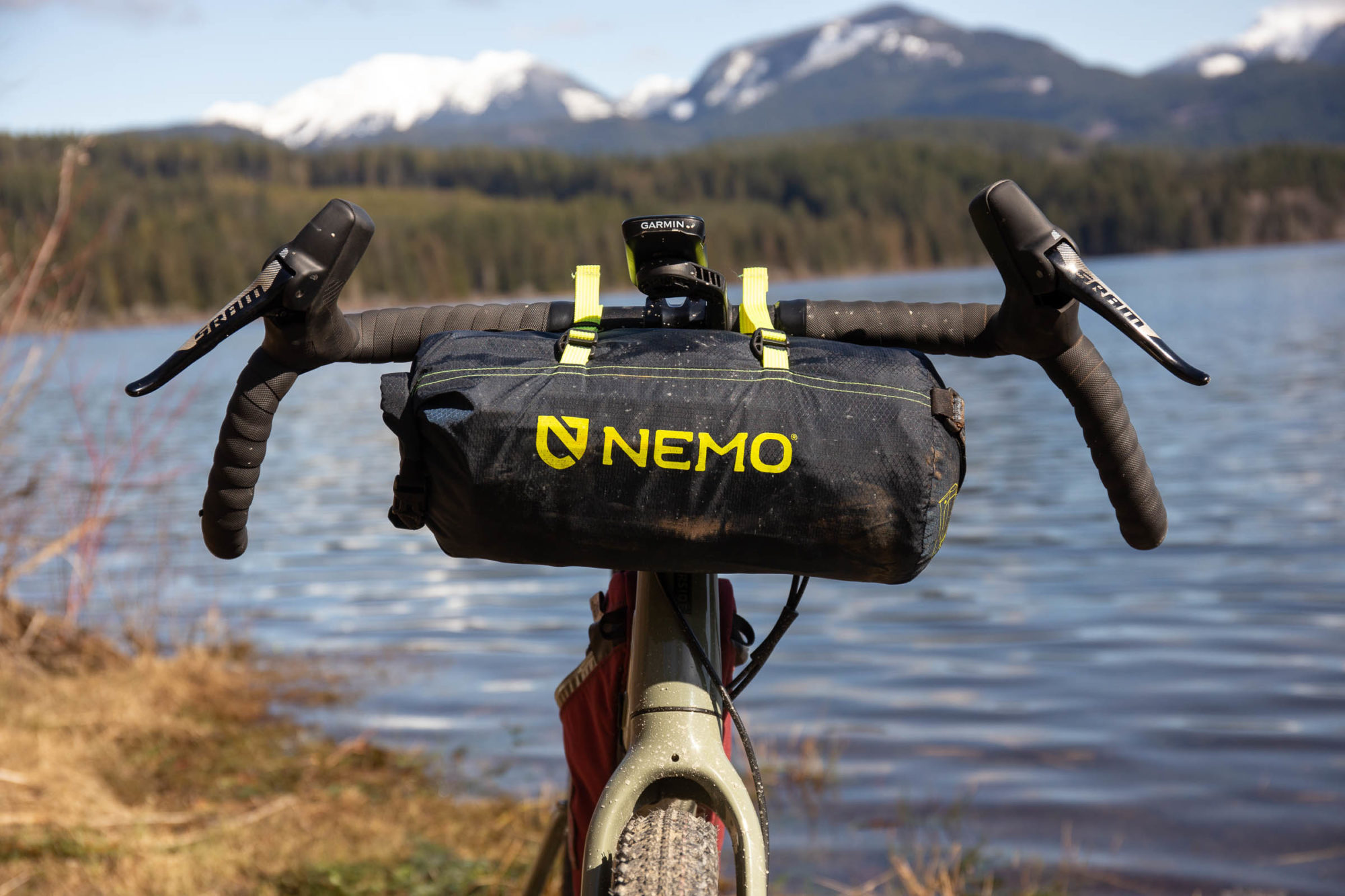
Pros
- Short segment poles are a must-have for any bikepacking-specific tent
- Lots of ways to organize your gear
- Not heavy (but also not particularly lightweight)
- Stealth colours
Cons
- Expensive for its weight class
- Handlebar bag is missing key features
- Model Tested: Nemo Dragonfly Bikepack Two-Person
- Claimed Weight: 1600g (3.5 pounds)
- Actual Weight: 1610g (3.54 pounds)
- Place of Manufacture: Vietnam
- Price: $450 USD
- Manufacturer’s Details: NemoEquipment.com
Wrap Up
Nemo got a lot right with the Dragonfly Bikepack Tent, and it’s great to see more manufacturers addressing the unique needs of bikepackers. The overall quality, ease of setup, and the amount of living space the tent offers are appreciated, making it a great tent for anyone who wants a straightforward night outside. For the price, it’s a shame that the two-person model weighs as much as it does, because at 3.5 pounds it’s likely not going to win over any experienced bikepackers who already have a lighter tent, and it’s a hefty investment for newer folks. Still, there is a price to pay for a tent that’s both freestanding and roomy, and the price, weight, and dimensions are right on par with Big Agnes’ Copper Spur HV UL2 Bikepack tent. Overall, I’ve been impressed with the two-person Dragonfly Bikepack tent as a roomy one-person shelter, and plan to keep it around for Emily and me to use or to lend out to friends who want to give bikepacking a try.
Please keep the conversation civil, constructive, and inclusive, or your comment will be removed.







